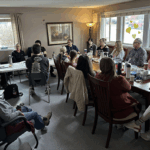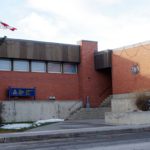Home »

More study of unmarked graves needed say ʔaq̓ am leaders
ʔaq̓ am Community leadership is today stressing patience and the need for further investigation following the announcement that 182 unmarked graves have been located by ground penetrating radar in 2020 beside the former St. Eugene Mission Residential School.
In a media release distributed this afternoon (June 30), leadership of ʔaq̓ am wishes to clarify information that has appeared on various social media platforms as well as national and international news regarding the discovery of 182 unmarked graves in a cemetery in the ʔaq̓ am Community and near the former site of the St. Eugene Residential School and the current site of the St. Eugene Golf Resort and Casino.
Last year while conducting some remedial work around the ʔaq̓ am Cemetery, an unfortunate incident occurred whereby an unknown and unmarked grave was found. In order to ensure no other graves were disturbed, ʔaq̓ am leadership, in consultation with elders and knowledge keepers, made the decision to employ a ground penetrating radar system to identify additional unmarked graves.
This was a deeply disturbing and painful experience for our elders and community as a whole. Ktunaxa cultural protocols were strictly followed by ʔaq̓ am community members who participated in the process as well as the contractor who operated the ground penetrating radar system.
Preliminary results from the investigation found 182 unmarked graves within the cemetery grounds, with some being only three to four feet deep.
ʔaq̓ am leadership would like to stress that although these findings are tragic, they are still undergoing analysis and the history of this area is a complex one.
The cemetery was established around 1865 for settlers to the region. In 1874, the St. Eugene Hospital was built near the St. Mary River and many of the graves in the ʔaq̓ am cemetery are those who passed away in the hospital from within the Cranbrook region during this timeframe. The hospital burned down in 1899 and was rebuilt in Cranbrook. The community of ʔaq̓ am did not start to bury their ancestors in the cemetery until the late 1800s.
The St. Eugene Residential School, adjacent to the cemetery site, was in operation from 1912 to 1970 and was attended by hundreds of Ktunaxa children as well as children from neighbouring nations and communities.
Graves were traditionally marked with wooden crosses and this practice continues to this day in many Indigenous communities across Canada. Wooden crosses can deteriorate over time due to erosion or fire which can result in an unmarked grave.
These factors, among others, make it extremely difficult to establish whether or not these unmarked graves contain the remains of children who attended the St. Eugene Residential School.
The community of ʔaq̓ am remains steadfast in its responsibility as caretakers of the ʔaq̓ am Cemetery and to those who eternally rest within. Further ground penetrating radar work will be done on the site and ʔaq̓ am is committed to working with external parties to identify as many graves as possible and to memorialize all unknown graves with stone markers to ensure that no soul is truly forgotten.
The issue of the remains of children victimized in residential schools and buried in unmarked graves is of great concern. ʔaqa̓m urges the other co-owners of the St. Eugene Resort, Ɂakisq̓nuk First Nation, Yaqan Nuʔkiy (Lower Kootenay), yaq̓ it ʔa·knuq̓ ⱡiʔit (Tobacco Plains) and the Shuswap Indian Band to work with ʔaq̓ am to ensure that this vital work is undertaken.
ʔaq̓ am leadership respectfully requests the public’s patience and understanding during this difficult time.
The National Indian Residential School Crisis Line is a 24-hour phone line available to provide support for residential school survivors and can be reached at 1-866-925-4419. In B.C., the KUU-US Crisis Line provides First Nations and Indigenous specific support and can be reached at 1-800-588-8717.
e-KNOW file photo
ʔaq̓ am Community







